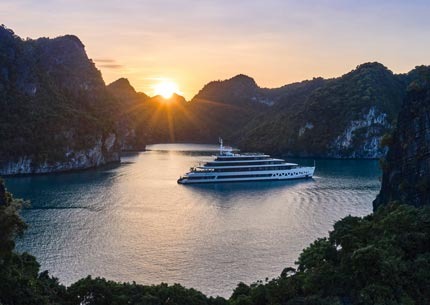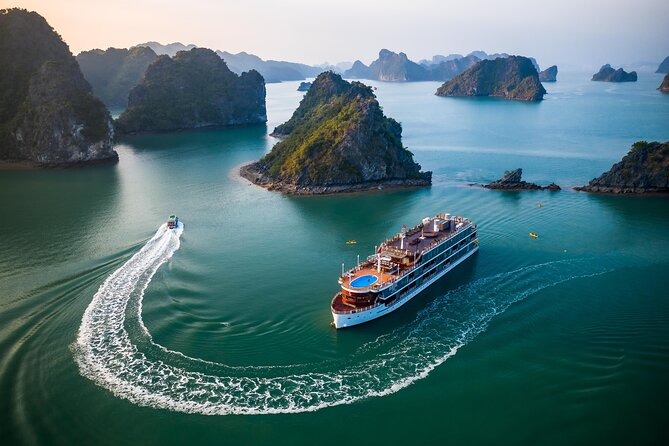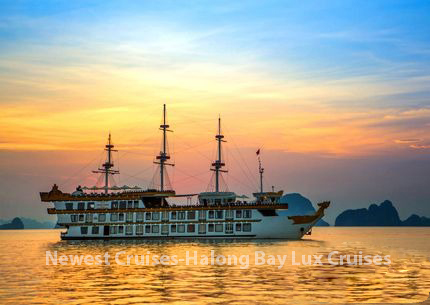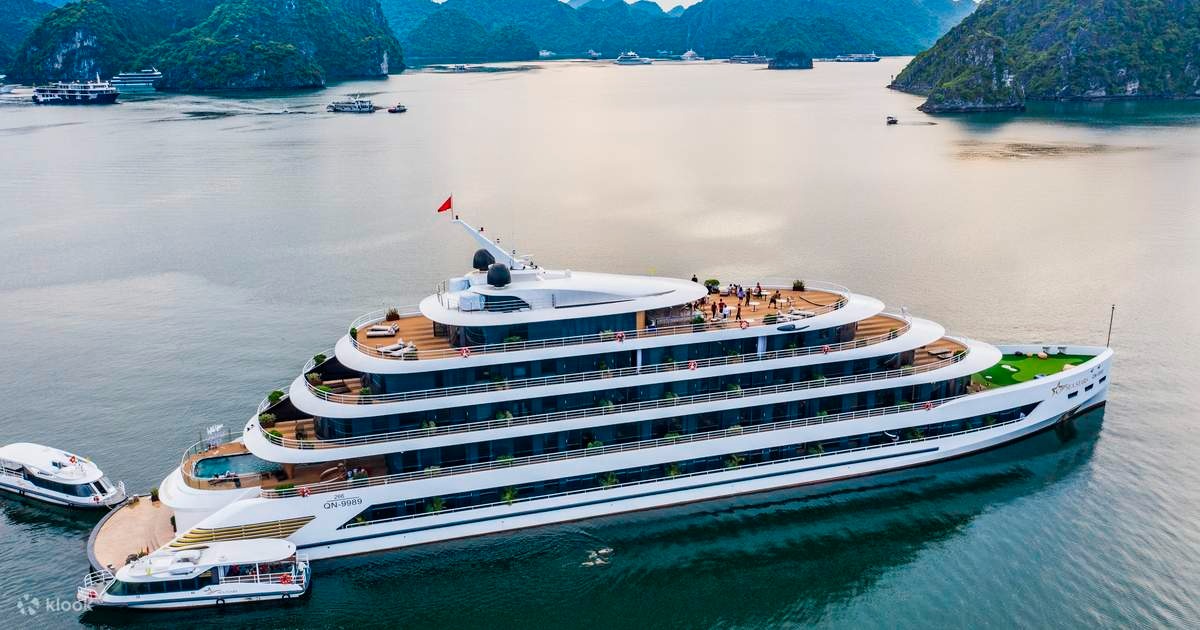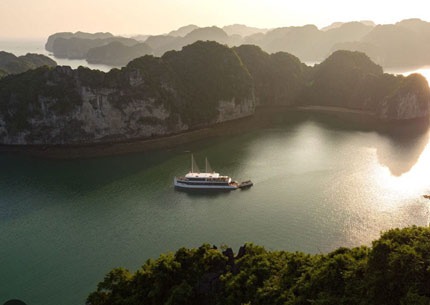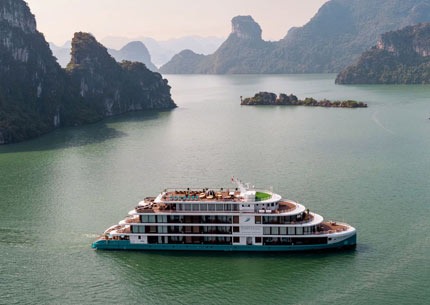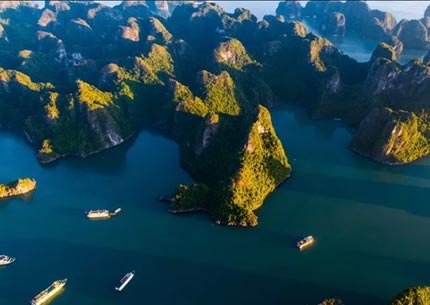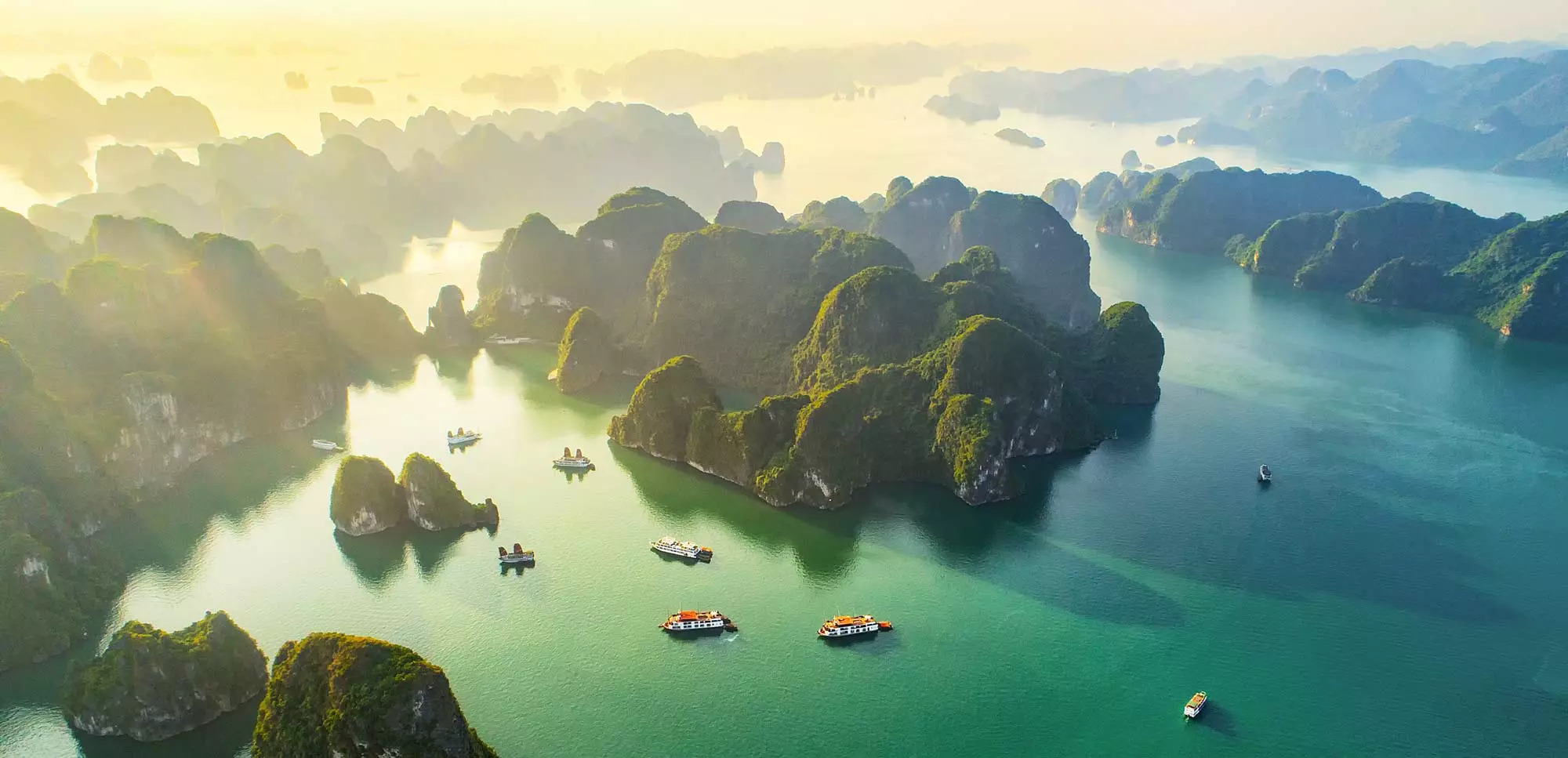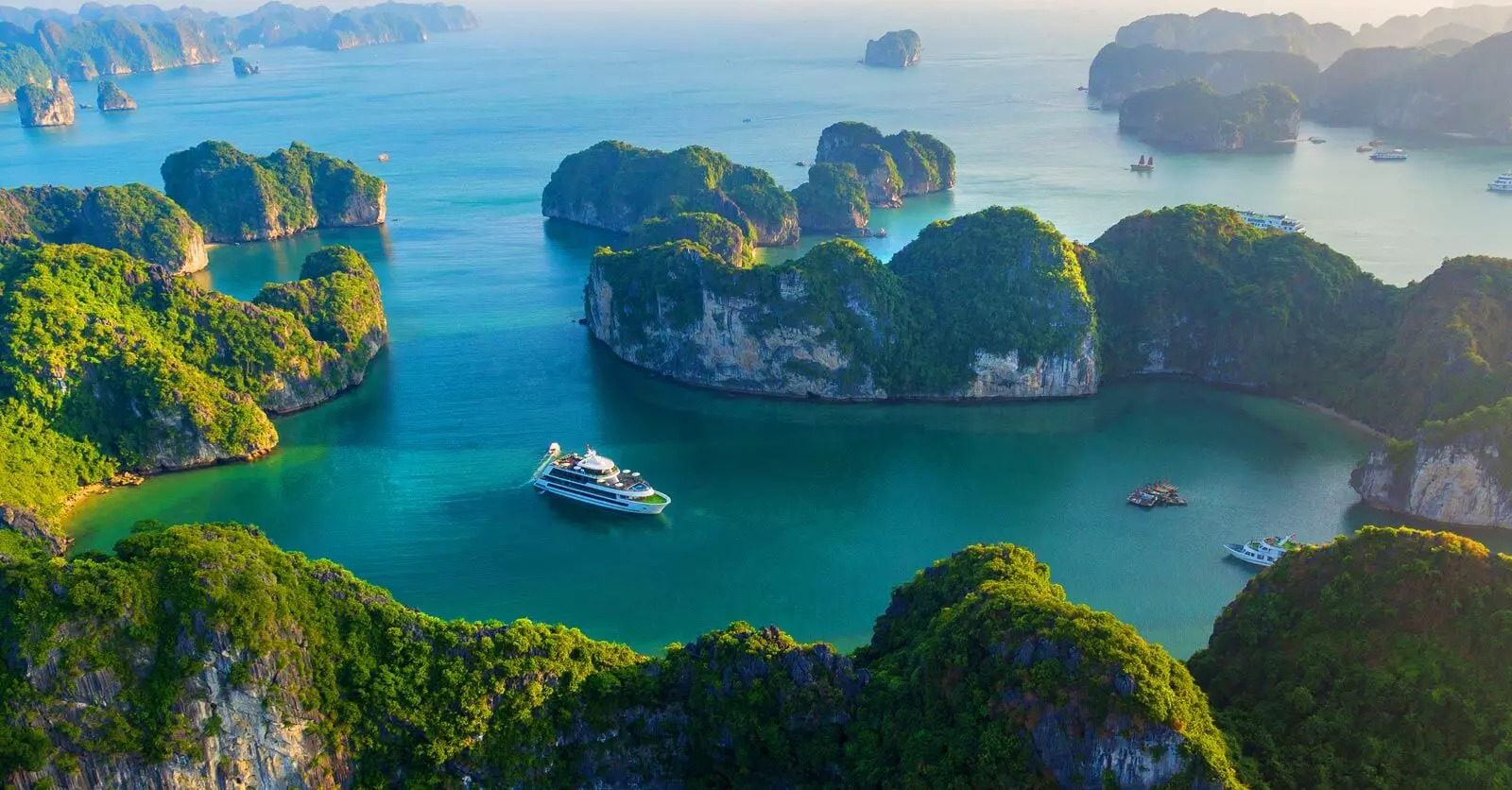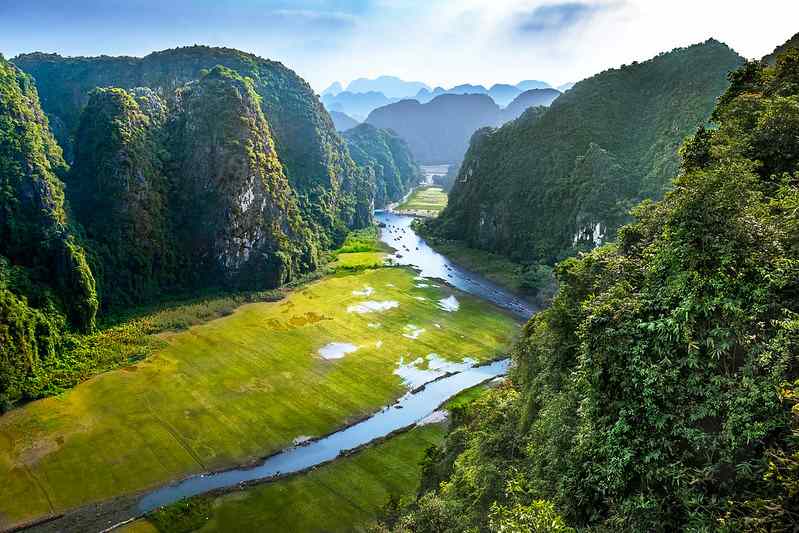30 Must-Visit Places in Northern Vietnam for 2025-2027: Ultimate Explorer’s Guide
Northern Vietnam captivates travelers with its breathtaking landscapes, from limestone karsts rising from emerald waters to terraced rice fields cascading down mountainsides. This comprehensive guide unveils the 30 most spectacular destinations in Northern Vietnam for your 2025-2027 adventure, complete with insider tips, hidden gems, and practical advice to create memories that will last a lifetime.
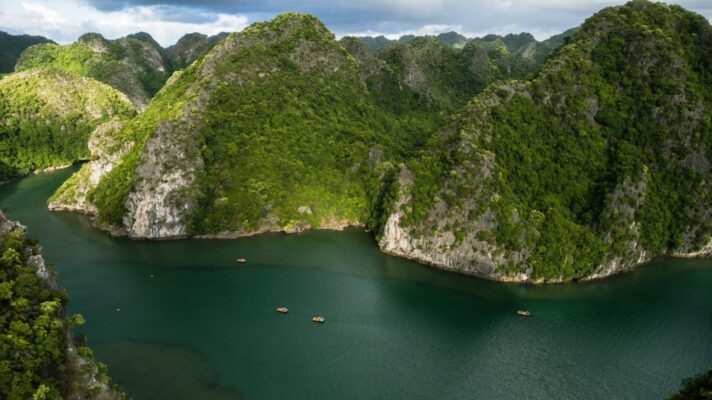
Why Northern Vietnam Should Top Your Travel List in 2025-2027
Northern Vietnam offers an enchanting blend of natural wonders, cultural diversity, and historical richness that few destinations can match. Recent infrastructure improvements have made travel more accessible than ever, while many areas still maintain their authentic charm away from mass tourism. Whether you’re seeking adventure, relaxation, cultural immersion, or photographic opportunities, Northern Vietnam delivers experiences that will touch your soul.
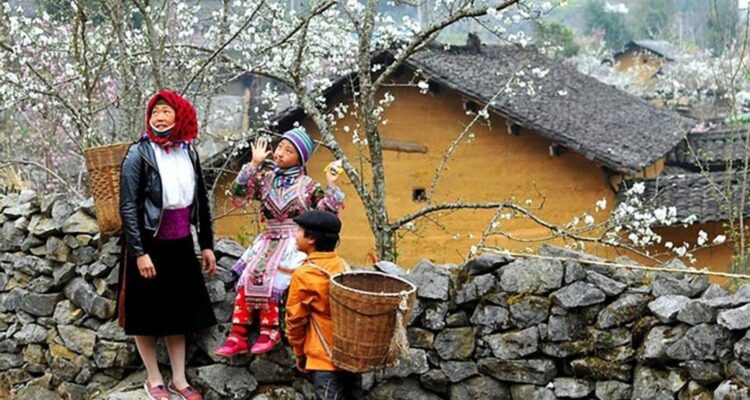
1. Ha Long Bay – The Iconic UNESCO Wonder
Ha Long Bay remains Northern Vietnam’s crown jewel with over 1,600 limestone islands and islets scattered across 1,553 square kilometers of turquoise waters. This UNESCO World Heritage Site has evolved its tourism offerings significantly for 2025, with stricter environmental regulations creating a more sustainable experience.
Best Cruising Experiences in Ha Long Bay
The ultimate way to experience Ha Long Bay is aboard a luxury cruise. The 5-star overnight cruises feature elegantly appointed cabins with private balconies, gourmet dining, and activities like kayaking through hidden lagoons and exploring magnificent caves. Premium vessels now offer 24-48 hour itineraries that reach less-visited corners of the bay, away from day-tripper routes.
Must-Visit Spots in Ha Long Bay
- Sung Sot Cave (Surprise Cave): Spanning 10,000 square meters with ceilings reaching 30 meters high, this is the bay’s largest and most spectacular cave.
- Ti Top Island: Climb 427 steps to the summit (110 meters) for panoramic views across Ha Long Bay.
- Cua Van Floating Village: One of the four remaining floating villages, home to around 300 residents who maintain traditional fishing lifestyles.
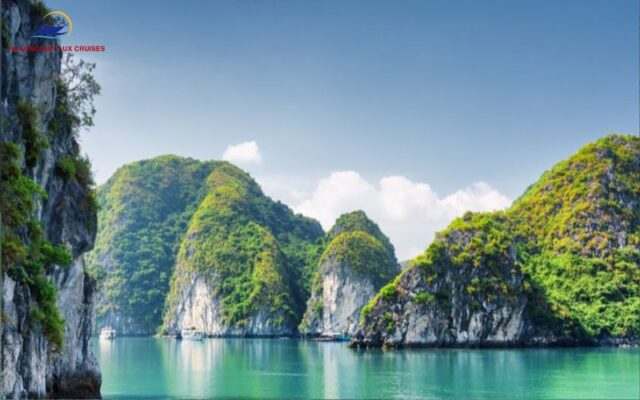
2. Hanoi – The Cultural Heart of Vietnam
Vietnam’s capital blends centuries-old charm with contemporary energy across its 3,359 square kilometers. Hanoi’s Old Quarter features 36 guild streets, each historically dedicated to specific trades, creating a fascinating maze to explore.
Unmissable Experiences in Hanoi
- Hoan Kiem Lake: This 12-hectare lake forms the city’s centerpiece, where locals practice tai chi at dawn and families stroll in the evening.
- Temple of Literature: Founded in 1070 as Vietnam’s first university, this well-preserved complex spans 54,331 square meters.
- Train Street: Experience the surreal sight of trains passing just inches from cafes and homes along this 300-meter stretch in the Old Quarter.
- Vietnamese Women’s Museum: Five floors documenting women’s crucial roles in Vietnamese society and revolution through 25,000+ artifacts.
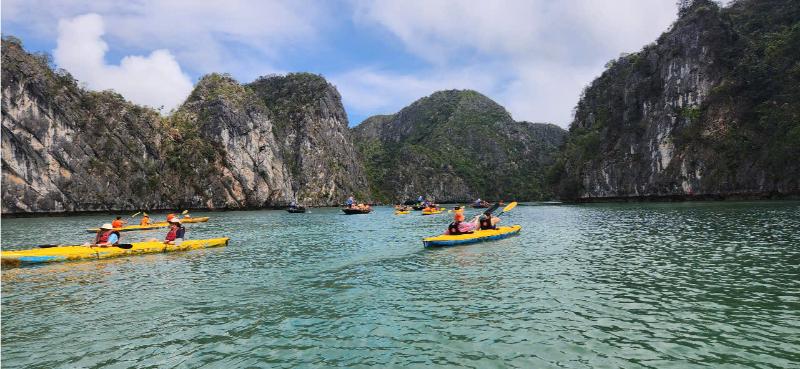
3. Ninh Binh – “Halong Bay on Land”
Just 93 kilometers south of Hanoi, Ninh Binh offers limestone landscapes reminiscent of Ha Long Bay but surrounded by rice fields and rivers. The 2025 tourism landscape here emphasizes sustainable experiences and deeper cultural connections.
Trang An Landscape Complex
This UNESCO World Heritage site features a 20-kilometer boat route through caves, temples, and valleys. The longest cave passage, Hang Toi, stretches 315 meters through a mountain, while boat journeys typically last 2-3 hours.
Tam Coc-Bich Dong
Known for its “three caves” boat tour stretching 7 kilometers along the Ngo Dong River, rowed by local guides often using their feet! The limestone karsts here rise dramatically to heights of 200 meters.
Bai Dinh Pagoda
The largest Buddhist complex in Vietnam covers 539 hectares, featuring 500+ stone Arhat statues, a 36-meter-tall bronze Buddha statue, and a bell weighing 36 tons.
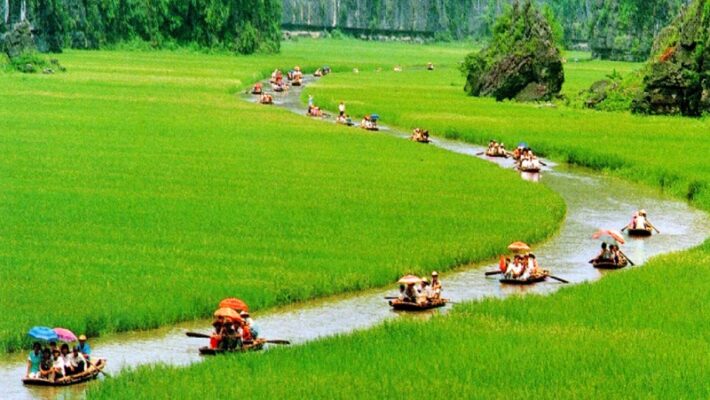
4. Sapa – Terraced Fields & Indigenous Cultures
Perched at 1,600 meters above sea level in the Hoang Lien Son Mountains, Sapa offers Vietnam’s most spectacular mountain scenery. The region is home to several ethnic minority groups including H’mong, Dao, Tay, Giay, and Xa Pho.
Fansipan Mountain Adventures
The “Roof of Indochina” rises 3,143 meters above sea level and is now accessible via a 6,292-meter cable car that holds the Guinness World Record for the longest three-rope cable car. Alternatively, hardcore trekkers can attempt the 19.2-kilometer round-trip hiking route.
Ethnic Village Experiences
- Cat Cat Village: Located 3 kilometers from Sapa town, this H’mong village preserves traditional crafts including hemp cultivation, weaving, and dyeing.
- Ta Phin Village: Home to both Red Dao and H’mong people, this community 12 kilometers from Sapa is renowned for intricate embroidery techniques passed down through generations.
For the complete Sapa experience, consider the 5-day combined tour of Sapa and Halong Bay to witness both mountain and maritime wonders in one perfectly balanced itinerary.
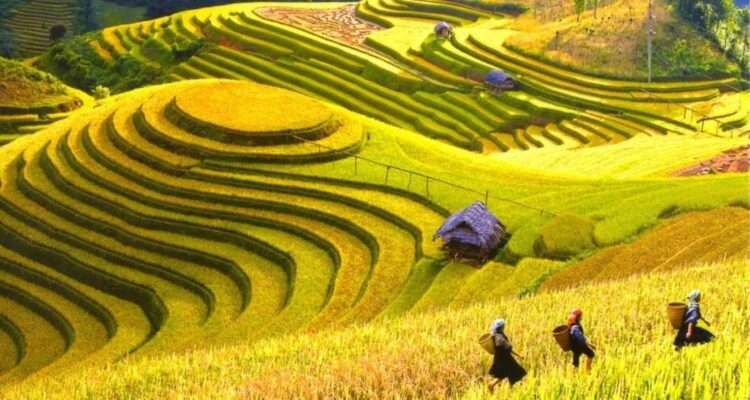
5. Ha Giang – The Final Frontier
Vietnam’s northernmost province shares a 270-kilometer border with China and offers the country’s most dramatic landscapes. The Ha Giang Loop, a 350-kilometer motorcycle circuit, has become legendary among adventure travelers.
Ma Pi Leng Pass
Often called the “King of Vietnamese Passes,” this 20-kilometer stretch rises to 1,500 meters with sheer drops of hundreds of meters to the Nho Que River below. The viewpoint at kilometer marker 470 offers what many consider Vietnam’s most spectacular vista.
Dong Van Karst Plateau Geopark
Recognized by UNESCO, this 2,356-square-kilometer geopark contains over 80% limestone and fossils dating back 400-600 million years. The region features 40 cultural heritage sites and is home to 17 ethnic minority groups.
6. Ban Gioc Waterfall – The Majestic Border Falls
Sharing its waters with China, Ban Gioc is Vietnam’s largest waterfall at 300 meters wide and 30 meters tall, with water cascading down three tiers. During the rainy season (May-September), the waterfall reaches its full dramatic potential with 150 cubic meters of water flowing per second.
Nguom Ngao Cave
Just 4 kilometers from Ban Gioc, this 2,144-meter cave system features stunning stalactites and stalagmites across three main chambers. The largest chamber reaches 100 meters in height.
7. Mai Chau – Peaceful Valley Retreat
Located 135 kilometers from Hanoi, Mai Chau Valley sits at an elevation of 150 meters, surrounded by peaks reaching 1,500 meters. The valley floor spans approximately 16 square kilometers of flat terrain perfect for cycling.
Traditional Stilt House Homestays
Mai Chau’s White Thai ethnic villages feature traditional wooden stilt houses elevated 2-3 meters above ground. These homes typically accommodate 6-8 travelers and provide authentic home-cooked meals.
Pu Luong Nature Reserve Connection
Just 30 kilometers from Mai Chau, Pu Luong offers more remote experiences across its 17,660 hectares of protected forest. The reserve contains 1,109 plant species and 259 animal species, including several endangered primates.
8. Moc Chau – Highland Blooms and Tea Culture
Situated 200 kilometers from Hanoi and perched at an average elevation of 1,050 meters, Moc Chau Plateau’s 80,000 hectares offer a perfect climate for agriculture and stunning seasonal displays.
Tea Plantations
Moc Chau’s 3,000 hectares of tea plantations produce some of Vietnam’s finest green tea. The Heart Tea Hill features tea bushes planted in heart formations, creating unique photo opportunities.
Seasonal Flower Spectacles
- January-February: Plum and peach blossoms cover hillsides
- October-November: Buckwheat flowers turn fields purple
- December: Wild sunflowers paint valleys golden
9. Pu Luong Nature Reserve – Eco-Tourism Paradise
This 17,660-hectare reserve represents one of Northern Vietnam’s most biodiverse ecosystems, with forests covering 94% of its territory. Traditional water wheels, measuring up to 4 meters in diameter, dot the landscape, channeling water to terraced rice fields.
Hikers’ Heaven
Pu Luong offers trails ranging from easy 3-kilometer village walks to challenging 15-kilometer mountain treks. The Ban Hieu to Kho Muong trail passes through pristine forests and traditional villages untouched by tourism.
10. Ba Be Lake – Northern Vietnam’s Alpine Waters
This 500-hectare freshwater lake sits 178 meters above sea level and reaches depths of up to 29 meters in some sections. The lake contains 23 small islands and is surrounded by limestone mountains rising to 1,098 meters.
Puong Cave Water Passage
This 300-meter limestone cave has the Nang River flowing through it, allowing boat trips under ceilings 30 meters high. The cave houses colonies of bats with up to 20,000 individuals.
Ethnic Village Encounters
Eight ethnic groups inhabit the Ba Be region, with Tay communities offering homestays in traditional wooden houses up to 65 meters long that can accommodate multiple generations of a family.
11. Dien Bien Phu – Historical Battlefield
The site of Vietnam’s decisive victory against French colonial forces in 1954, this remote valley in northwestern Vietnam holds tremendous historical importance. The battle lasted 56 days, with Vietnamese forces moving 200,000 tons of supplies and equipment to the front using bicycles, horses, and human carriers.
Key Historical Sites
- A1 Hill (Eliane 2): The most fiercely contested position, where 2,000 Vietnamese soldiers died taking this single hill.
- Dien Bien Phu Victory Museum: Housing 1,000+ artifacts and photographs documenting the battle.
- De Castries’ Bunker: The preserved 20-square-meter underground command center of the French forces.
12. Mu Cang Chai – Golden Rice Terraces
Located in Yen Bai Province, Mu Cang Chai’s terraced rice fields cover 2,200 hectares and cascade down mountains at elevations between 1,000-1,600 meters. The H’mong people have cultivated these terraces for over 300 years.
Photography Hotspots
- La Pan Tan Village: Features the most extensive and visually stunning rice terraces.
- Che Cu Nha Village: Offers panoramic views across multiple terraced hills.
- Mam Xoi Hill (Sticky Rice Hill): Named for its resemblance to a bowl of yellow sticky rice during harvest season.
13. Tam Dao – Hill Station Escape
Just 85 kilometers from Hanoi, this former French hill station sits at 900 meters elevation, with its highest peak reaching 1,591 meters. Summer temperatures average a pleasant 20-22°C, providing relief from Hanoi’s heat.
European Ambiance in Vietnam
Tam Dao retains 139 French colonial villas and a stone church dating to 1906, creating a distinctive European atmosphere. The town’s main street stretches 2 kilometers along the mountain ridge, offering views across the Red River Delta.
14. Bac Ha – Sunday Market Spectacle
Located 76 kilometers from Sapa, Bac Ha hosts Vietnam’s most colorful ethnic market each Sunday. The market attracts 8,000+ people from 10 different ethnic groups wearing distinctive traditional attire.
Market Highlights
The 4-hectare marketplace contains specific sections for livestock, textiles, agricultural products, and forest goods. The textile section features handmade items using traditional techniques requiring up to 3 months to create a single outfit.
Hoang A Tuong Palace
Built between 1914-1921, this 4,000-square-meter palace blends European, Chinese, and Vietnamese architectural styles. The former home of a Hmong lord features 36 rooms decorated with intricate carvings.
15. Cao Bang Province – Remote Beauty
Sharing a 333-kilometer border with China, Cao Bang offers some of Northern Vietnam’s most pristine natural environments across its 6,700 square kilometers. The province contains 47 ethnic groups with distinct cultural practices.
Thang Hen Lake System
This network of 36 interconnected lakes sits at an elevation of 1,000 meters. During the rainy season, the lakes merge into a single body of water covering 3 square kilometers.
Pac Bo Cave
Where Ho Chi Minh lived for 2 months upon returning to Vietnam in 1941 after 30 years abroad. The simple cave measures 40 square meters and overlooks the poetically named “Lenin Stream” and “Karl Marx Mountain.”
16. Lang Son – Border Trade and Ancient Gates
This northeastern province shares a 231-kilometer border with China and serves as Vietnam’s main overland trading gateway. The province features unique “walking streets” that become bustling night markets after sunset.
Tam Thanh Cave
This 1,200-meter-long cave houses a Buddhist temple within its chambers, some reaching heights of 30 meters. Stone inscriptions inside date back to the 11th century.
Mau Son Mountain
Rising to 1,541 meters, this mountain recorded Vietnam’s coldest-ever temperature of -6°C. The area features 80 French colonial villas built between 1935-1936 as a mountain retreat.
17. Thai Nguyen – The Tea Capital
Located 75 kilometers north of Hanoi, Thai Nguyen produces Vietnam’s finest green tea across 16,000 hectares of plantations. The province hosts an annual tea festival attracting 400,000 visitors.
Museum of Vietnamese Tea Culture
The only specialized tea museum in Vietnam displays 1,000+ artifacts relating to the cultivation, processing, and cultural significance of tea throughout Vietnamese history.
Nui Coc Lake
This artificial lake covers 25 square kilometers and contains 89 islands of various sizes. Local legend claims these islands were created when a tearful fairy dropped 89 eggs that transformed into the islands.
18. Tuyen Quang – Revolutionary Heritage
This mountainous province served as the headquarters for Vietnam’s revolutionary government between 1945-1954. The province contains 1,840 square kilometers of forest coverage, representing 76% of its total area.
Na Hang – Lam Binh Nature Reserve
This 31,368-hectare reserve protects primeval forests containing 1,302 plant species and 317 animal species, including the critically endangered Tonkin snub-nosed monkey, with fewer than 250 individuals remaining.
Tan Trao Banyan Tree
Under this 300-year-old tree spanning 30 meters in diameter, Ho Chi Minh and revolutionary leaders made critical decisions leading to the August Revolution of 1945.
19. Lao Cai City – Border Gateway
This provincial capital sits directly across the Nanxi River from China’s Yunnan Province. The city serves as the terminus for the 294-kilometer railway connecting Hanoi to China and processes 800,000+ border crossings annually.
Cultural Fusion
The city’s unique position has created a fascinating blend of Vietnamese and Chinese influences evident in its architecture, cuisine, and customs. The night market features 200+ stalls selling goods from both countries.
20. Dong Van – Stone Plateau Town
This remote town sits at an elevation of 1,025 meters on the Dong Van Karst Plateau. Traditional homes built from stone reflect adaptation to the rocky terrain where soil is scarce.
Ancient Quarter
Dong Van’s old quarter contains 40 traditional houses built between 100-150 years ago using a unique combination of earth, stone, and wood. The houses feature distinctive tile roofs designed to withstand mountain weather.
Lung Cu Flag Tower
Marking Vietnam’s northernmost point, this 30-meter tower flies a 54-square-meter Vietnamese flag representing the country’s 54 ethnic groups. From the tower, visitors can see into Chinese territory just 3 kilometers away.
21. Meo Vac – Remote Mountain Market
Located 160 kilometers from Ha Giang city, this remote district sits 800-1,200 meters above sea level and is home to H’mong, Dao, Lo Lo, and Tay ethnic groups. Sunday markets draw ethnic minorities from distant villages wearing full traditional attire.
Nho Que River Canyon
The river has cut a spectacular gorge reaching depths of 800 meters through limestone mountains. Adventurous travelers can take boat rides on the emerald waters beneath towering cliffs.
22. Son La – Northwestern Frontier
Covering 14,055 square kilometers, Son La is Vietnam’s third-largest province and shares a 250-kilometer border with Laos. The province features a dramatic landscape of high mountains and deep valleys.
Son La Prison
Built by the French in 1908, this prison held Vietnamese revolutionary leaders under harsh conditions. The prison complex covers 2.5 hectares and contained 60 cells designed to hold up to 1,000 prisoners.
Ta Xua Cloud Paradise
Rising 2,879 meters, Ta Xua mountain is famous for its “sea of clouds” phenomenon where visitors can stand above cloud formations that fill valleys below. The best viewing seasons are winter and early spring.
23. Con Son – Kiep Bac Complex
Located in Hai Duong Province, this 700-hectare complex honors Vietnam’s most revered military leader, Tran Hung Dao, who defeated Mongol invasions in the 13th century. The complex includes 15 significant historical structures.
Con Son Pagoda
Originally built in the 13th century and expanded in the 17th century, this pagoda contains 212 statues and carved stone stelae recording important historical events.
24. Xuan Son National Park
Spanning 15,048 hectares in Phu Tho Province, this park protects unique limestone formations and primary forest ecosystems. The park contains 726 plant species and 365 animal species, including 23 listed in Vietnam’s Red Book of endangered species.
Natural Caves
The park features 30+ caves, including Tien Son Cave with its unique calcite formations covering 10,000 square meters across multiple chambers connected by narrow passages.
25. Quang Ninh Beyond Ha Long
While Ha Long Bay receives most attention, Quang Ninh Province offers numerous other attractions across its 6,102 square kilometers and 250-kilometer coastline.
Bai Tu Long Bay
This less-visited sister bay to Ha Long contains 1,909 islands over an area of 158 square kilometers. Strict visitor limitations maintain pristine conditions, with only 500 tourists permitted daily compared to Ha Long’s 7,000+.
Yen Tu Mountain
Rising 1,068 meters, this sacred mountain features 11 pagodas and hundreds of shrines connected by a stone path with 6,000 steps. The mountain has been a Buddhist pilgrimage site for 700+ years.
26. Vinh Phuc – Lakeside Leisure
Just 60 kilometers from Hanoi, Vinh Phuc Province offers accessible escapes including Tam Dao National Park and cultural attractions like Tay Thien Pagoda, dating to the 8th century.
Dai Lai Lake
This 525-hectare artificial lake has developed into a premium resort destination with 5-star accommodations, golf courses, and water sports facilities. The lake sits at the foot of Tam Dao Mountain, creating a picturesque setting.
27. Lai Chau – Remote Northwestern Beauty
Vietnam’s least populated province shares borders with both China and Laos. The mountainous terrain features peaks above 2,000 meters and deep valleys carved by the Da River.
Sin Ho Plateau
Often called the “second Sapa,” this plateau sits at an elevation of 1,500 meters and offers similarly spectacular mountain views without the crowds. The plateau hosts markets where Dao, H’mong, and Lu ethnic groups gather.
28. Co To Island – Emerging Beach Paradise
Located 80 kilometers from the mainland in the Gulf of Tonkin, Co To Island offers Vietnam’s most pristine beaches with powdery white sand and crystal-clear waters. The island spans 47.3 square kilometers with 20+ beaches.
Hong Van Beach
This 3-kilometer stretch of pink-tinged sand derives its unique color from crushed red coral mixed with white sand. The beach offers sunset views toward the mainland mountains.
29. Phu Tho – Birthplace of Vietnam
According to legend, Vietnam’s first kingdom was established here in 2879 BCE by the Hung Kings. The province hosts the annual Hung Kings Festival, recognized by UNESCO as Intangible Cultural Heritage.
Hung Temple Complex
Spread across 1,000 hectares on Nghia Linh Mountain, this complex includes 32 temples and shrines honoring Vietnam’s founding dynasty. The main temple sits at an elevation of 175 meters accessed by 225 stone steps.
30. Bac Kan – Untouched Wilderness
Vietnam’s least populated province offers pristine natural environments with 95% mountainous terrain. The province contains 41,000 hectares of old-growth forest, some with trees over 1,000 years old.
Ba Be Lake Expansion
Recent conservation efforts have expanded protected areas around Ba Be Lake to create a 31,000-hectare national park containing 1,268 plant species and 553 animal species, including 106 listed in Vietnam’s Red Book.
Planning Your Vietnam Adventure for 2025-2027
Best Time to Visit
- March-May: Spring brings comfortable temperatures (20-30°C) and flowering landscapes
- September-November: Clear skies, moderate temperatures, and golden rice harvests
- December-February: Cool temperatures (10-20°C) with misty mountain scenery
- Avoid: June-August (monsoon season with potential flooding and landslides)
Getting Around Northern Vietnam
- Sleeper Trains: The Hanoi-Lao Cai line offers 4-berth VIP cabins with high-quality amenities
- Private Car Hire: Approximately $60-100 USD/day including driver
- Motorbike Rental: $8-15 USD/day for automatic scooters, $15-25 USD/day for larger bikes
- Domestic Flights: Now connect Hanoi with Ha Giang, Dien Bien Phu, and other remote areas
Accommodation Options
- Luxury Cruises: The ultimate Ha Long Bay experience starts at $180-350 USD/person for premium cabins with balconies
- Boutique Hotels: $60-120 USD/night in cities and tourist centers
- Homestays: $15-30 USD/night including home-cooked meals
- Eco-Lodges: $40-100 USD/night in nature reserves and national parks
Sample Itineraries
7-D Highlights Tour
- Days 1-2: Hanoi exploration
- Days 3-4: Ha Long Bay luxury cruise
- Days 5-7: Sapa trekking and cultural immersion
14-Day Northern Vietnam Adventure
- Days 1-2: Hanoi
- Days 3-4: Ninh Binh
- Days 5-6: Ha Long Bay cruise
- Days 7-10: Sapa and surroundings
- Days 11-14: Ha Giang Loop
21-Day Complete Northern Exploration
- Days 1-3: Hanoi
- Days 4-5: Ninh Binh
- Days 6-7: Ha Long Bay luxury experience
- Days 8-10: Ba Be Lake and Cao Bang
- Days 11-14: Ha Giang Loop
- Days 15-17: Sapa region
- Days 18-19: Mai Chau and Pu Luong
- Days 20-21: Return to Hanoi via Tam Dao
Conclusion: Must-Visit Places in Northern Vietnam for 2025-2027
Must-Visit Places in Northern Vietnam at an exciting crossroads for travelers in 2025-2027. Infrastructure improvements have made even remote areas accessible, while thoughtful tourism development preserves the authentic experiences that make this region so special. From the world-famous limestone seascapes of Ha Long Bay to the hidden valleys of Ha Giang, from ancient cultural traditions to dramatic natural wonders, Northern Vietnam rewards travelers with experiences that engage all senses.
The region has successfully balanced development with preservation, creating tourism options for every travel style—from luxury cruises to homestay adventures, from leisurely city explorations to challenging mountain treks. What remains consistent throughout Vietnam is the warm hospitality, rich cultural heritage, and breathtaking natural beauty that create truly transformative travel experiences.
Plan your journey through these 30 magnificent destinations and discover why has become the most compelling travel destination in Southeast Asia for 2025-2027.
Hotline | WhatsApp: +84.978.358.422
Phone | WhatsApp: +84.962.261.687
Email: halongbayluxcruises@gmail.com
vietnammarveltravel@gmail.com

